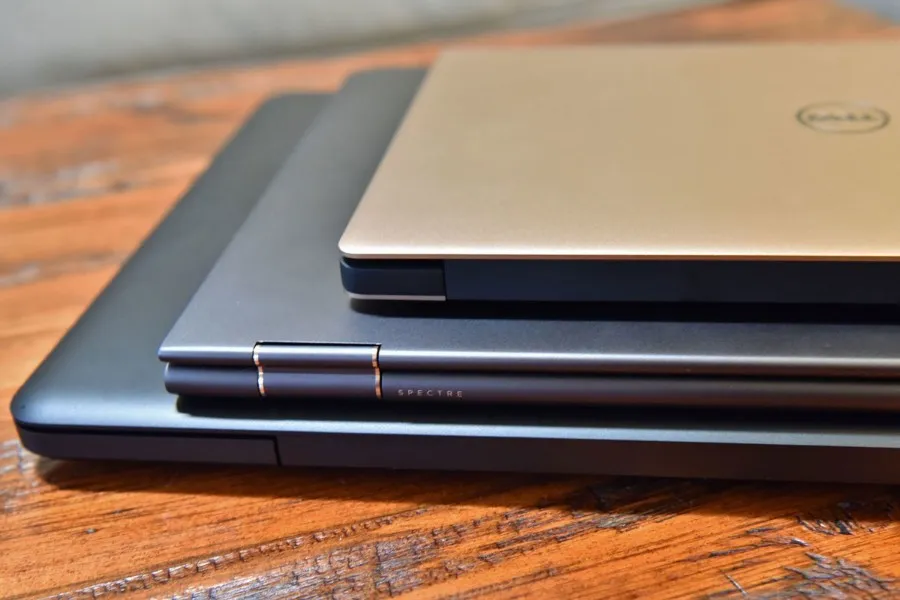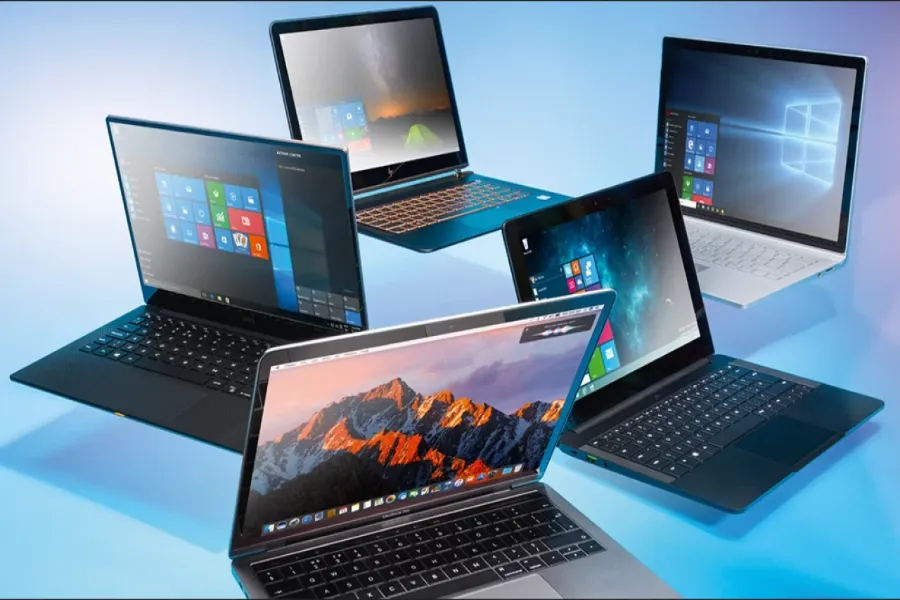Buying a used laptop can be a great way to save money and get a good deal on a device that suits your needs. However, buying a used laptop also comes with some risks and challenges. You may not know the history or condition of the computer, and you may not get any warranty or guarantee from the seller. Therefore, it is essential to test the computer’s health before buying it to ensure it works properly and has no significant issues or defects.
This article from Night Agency will show you how to test a used laptop’s health in six steps.
Test the RAM
RAM (Random Access Memory) is the short-term memory of your laptop. It stores the information of the programs and processes running on your computer and helps it run smoothly and fast. If the RAM is faulty or insufficient, your computer may experience crashes, errors, slow performance or distorted graphics. To test the RAM of a used laptop, you can use the Windows Memory Diagnostic tool that comes with Windows 10/11. Here is how to use it:
- Save any unsaved work and close any open programs, as the tool will restart your laptop.
- Press Windows + R keys to open the Run dialogue box.
- Type “mdsched.exe” (without quotes) and press Enter.
- Click on Restart now and check for problems (recommended).
- Your laptop will restart and run the Memory Diagnostic tool automatically.
- After the test, your laptop will restart again and show you the test results on the screen or in the Event Viewer.
If the test results show any errors or problems with your RAM, you should avoid buying the laptop or ask for a lower price.
Check the Hard Drive
The hard drive is where your laptop stores all your files, documents, photos, videos and other data. It also affects the speed and performance of your laptop. Suppose the hard drive is damaged, corrupted or has bad sectors (parts of the disk that cannot be read or written). In that case, your laptop may have trouble accessing or saving data or fail to boot up. To check the hard drive of a used laptop, you can use various tools such as CrystalDiskInfo, CHKDSK, or SMART.
You can also look at other information such as temperature, power on hours, power cycle count and error rate to better understand how much your hard drive has been used and how reliable it is.

Test the Battery
The battery is one of the most critical components of a laptop, especially if you need to use it on the go without plugging it into an outlet. A laptop’s battery life and performance depend on many factors, such as its size, capacity, usage, settings and age. Over time, batteries degrade and lose their ability to hold a charge or deliver power efficiently. To check the battery health status of a laptop and its health in general, you can use various methods such as Windows Battery Report, BatteryInfoView, or BatteryBar.
Here is how to use Windows Battery Report, a built-in tool that generates a detailed report on your battery’s health and history:
- Press Windows + X keys and select Windows PowerShell (Admin) from the menu.
- Type “powercfg /batteryreport” (without quotes) and press Enter.
- A message will appear telling you where the report has been saved (usually in C:\Windows\System32).
- Open File Explorer and navigate to that location.
- Double-click on battery-report.html to open it in your browser.
- Look at various sections such as Battery Information, Recent Usage, Battery Capacity History, and Battery Life Estimates.
The report will show you information such as:
- Your battery’s design capacity and total charge capacity (how much power it can store when new and fully charged).
- The cycle count of your battery (how many times it has been fully charged and discharged).
- The estimated battery life is based on different scenarios (such as video playback or web browsing).
- The battery usage history is based on different dates (such as when it was plugged in or unplugged).
To calculate the battery health percentage, divide the total charge capacity by the design capacity and multiply by 100. For example, suppose your battery has a design capacity of 50,000 mWh and a full charge capacity of 40,000 mWh. In that case, its health percentage is 80%. A lower percentage means lower battery life and performance. Generally, anything below 60% is considered poor and may need a replacement.
To know what are the things when buying a laptop, read article” What to consider when buying a laptop“.

Stress Test the CPU and GPU
The CPU (Central Processing Unit) and GPU (Graphics Processing Unit) are the central processors of your laptop. They handle all the calculations and operations that make your laptop run. The CPU is responsible for general tasks such as opening programs, browsing the web, or editing documents. The GPU is responsible for graphics-related tasks such as playing games, watching videos, or rendering images. If the CPU or GPU is faulty or overheated, your laptop may experience slowdowns, freezes, crashes, or errors.
A healthy CPU should be able to run at its maximum clock speed without throttling (reducing its rate to prevent overheating). A beneficial CPU should also have a temperature below 90°C under stress (although this may vary depending on the model and cooling system). A healthy CPU should also have a load close to 100% under pressure (meaning it is fully utilized).
A healthy GPU should be able to run at its maximum clock speed without throttling. A healthy GPU should also have a temperature below 90°C under stress (although this may vary depending on the model and cooling system). A healthy GPU should also have a load close to 100% under pressure (meaning it is fully utilized).
Keep the Temperature of CPU and GPU Under Check
As mentioned above, the temperature of your CPU and GPU is an essential indicator of their health and performance. If your laptop gets too hot, it may damage its components or cause thermal throttling (reducing its speed to prevent overheating). To keep the temperature of your CPU and GPU under check, you should do the following:
- Clean the dust and dirt from your laptop’s vents and fans using compressed air or a soft brush. Dust and dirt can clog up the airflow and reduce the cooling efficiency of your computer.
- Use a cooling pad or stand to improve your laptop’s ventilation. Cooling pads or stands can also provide additional fans to blow cool air into your computer.
- Avoid placing your laptop on soft surfaces like pillows, blankets, or carpets. Smooth surfaces can block the vents and fans of your computer and trap heat inside.
- Adjust your power settings to balance performance and temperature. You can do this by going to Settings > System > Power & Sleep > Additional power settings > Change plan settings > Change advanced power settings. You can then tweak various options such as processor power management, system cooling policy, and graphics power plan.

Check for Other Issues
Besides testing the main components of your laptop, you should also check for other issues that may affect its usability and functionality. Some of these issues are:
- Screen: Look for cracks, scratches, dead pixels, backlight bleeding, flickering, or colour distortion on the LCD. Test different brightness levels and resolutions to see how they affect the screen quality.
- Keyboard: Test every key on the keyboard to see if they work correctly and respond accurately. Look for any signs of wear and tear, sticky or missing or loose keys.
- Touchpad: Test the touchpad to see if it works smoothly and accurately. Check if it supports gestures such as scrolling, zooming, and tapping. Look for any damage or malfunction on the touchpad surface or buttons.
- Ports: Test every port on your laptop to see if they work correctly and connect securely. Try plugging in different devices such as USB drives, headphones, chargers,
- Speakers: Test the speakers to see if they work correctly and produce a clear and loud sound. Try playing different types of audio, such as music, videos, and games. Look for any distortion, crackling, or buzzing on the speakers.
- Webcam: Test it to see if it works appropriately and captures clear and bright images. Try using apps like Skype, Zoom, or Camera to test the webcam quality. Look for any damage or malfunction on the webcam lens or cover.
- Wi-Fi: Test the Wi-Fi to see if it works appropriately and connects to the internet. Try browsing different websites, streaming videos, and downloading files. Check the Wi-Fi signal strength and speed using Speed Test or Wi-Fi Analyzer tools. Look for any signs of interference or instability on the Wi-Fi connection.
Conclusion
Buying a used laptop can be innovative and economical if you do it right. By testing the computer’s health before you buy it, you can avoid buying a faulty or damaged laptop that may cost you more in repairs or replacements. You can also negotiate a better price or warranty with the seller if you find any issues or defects on the laptop. Following the six steps in this article, you can test a used laptop’s health and make a well-informed purchase.

